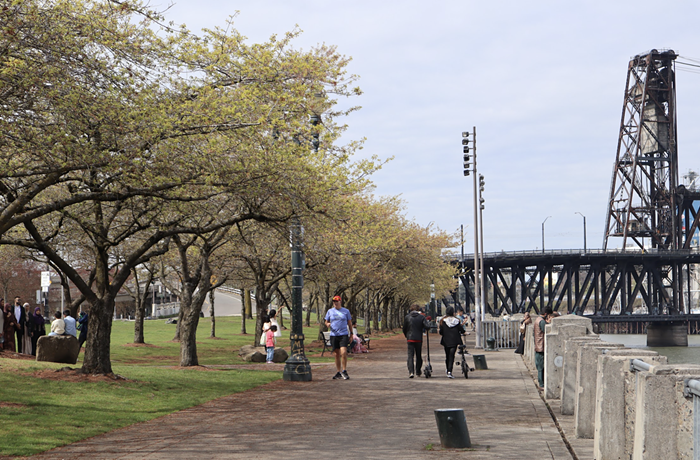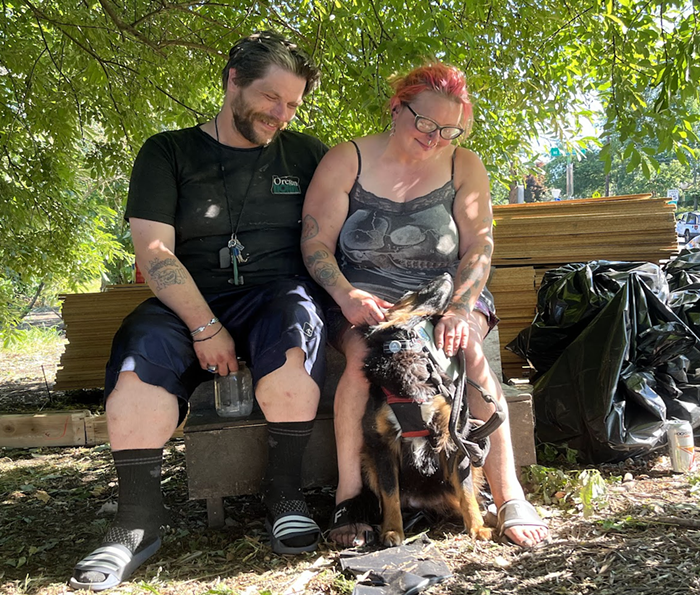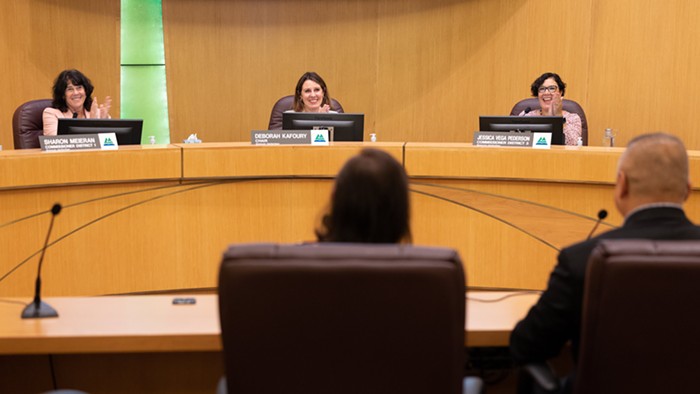“Night Bus” sounds like it should be a raunchy ’80s comedy starring both of the Coreys, or maybe a horror flick with the tagline “Next stop: DEATH.” But what Trimet’s new Night Bus and other expanded features lack in risqué hijinks or chilling scares, they make up for with something this city has been lacking for far too long: all-night public transit.
It’s been longer than 30 years since TriMet offered 24-hour service, and while the destinations are limited to a narrow east-west axis, you can spend your wee hours riding all the way across Portland, and then some.
On the west side, TriMet’s new 24-hour service covers Forest Grove, Cornelius, Hillsboro, and Beaverton via the expanded 57 line. At Beaverton Transit Center, it connects with line 20, which wanders up Southwest Cedar Hills and Southwest Barnes before traveling down West Burnside, where it moves through downtown, crosses the Willamette, and journeys all the way east to Southeast 102nd. There, the line dips south to Stark and extends eastward to Gresham, where it stops by Mt. Hood Community College and terminates at Gresham Transit Center.
Meanwhile, for airport access, line 272 (AKA “PDX Night Bus”) goes from the heart of the Montavilla neighborhood—with a stop at SE 80th and Washington—and travels north up 82nd Avenue, where it connects with line 20 at East Burnside. The 272 then continues up to Airport Way and deposits travelers right outside the airport. This is a huge benefit to early-morning airport workers, who previously had no way to get to their jobs during the overnight hours when the MAX Red Line isn’t running.
But before you get too excited about riding to and fro across Portland during the witching hour, these new buses will only come through about once every 60 minutes. It’s geared more toward overnight and early-morning workers than late-night revelers, meaning that in most cases, you and your bursting bladder are still probably better off using a rideshare app or a taxi to get home from the bar or a show. Fortunately, the rise of Lyft and Uber has taken some of the onus off TriMet to provide late-night service in order to keep drunk drivers off the road, although we hope that these new features are the beginning of a more comprehensive overnight service that both workers and players can take advantage of.
Along with the rollout of night service, Trimet has also expanded a number of lines to provide more frequent service, including additional buses on line 73 (along Northeast and Southeast 122nd), line 81 (in Troutdale), and line 96 (from downtown Portland to Tualatin). The MAX Red Line will also run a bit later.
But for those of us living in Southeast Portland and North Portland, the most significant change is TriMet’s splitting in two of its incredibly lengthy 4 line, the infamous Division/Fessenden bus. The mighty 4, which had previously been TriMet’s longest line, used to go from St. Johns all the way out to Gresham, and while it could be a great way to get from Southeast up to North Portland, the sheer length of the line resulted in problems if one bus became delayed, creating a ripple effect that led to all the buses running late.
Now the 4 comes down from St. Johns and ends in downtown Portland. The brand-new 2 line picks up the rest of the line, going from downtown to Southeast Division and continuing out to Gresham. If you previously used the 4 to get from Southeast to North Portland (or vice versa), you’ll need to transfer downtown.
This new 2 bus line is a harbinger of more changes to come along the Southeast Division corridor: TriMet has been researching and planning a high-speed, extra-long articulated bus to roar down the busy street, which gets awfully narrow in the dense, pedestrian-heavy restaurant row of the 20s and 30s. Construction on the Division Transit Project is scheduled to begin in late 2019, with the service supposedly launching in 2022; the new jumbo buses will carry more passengers along the crowded bus line, and theoretically move faster, too. While it seems like it would make more sense to place a high-speed bus just a few blocks away on Southeast Powell, which has four lanes, TriMet’s studies pointed them toward the two-lane Division as a better fit. No doubt the project—and the extended curbside stops required for these massive 60-foot buses—will wreak havoc on the already scarce parking in the neighborhood.












